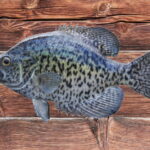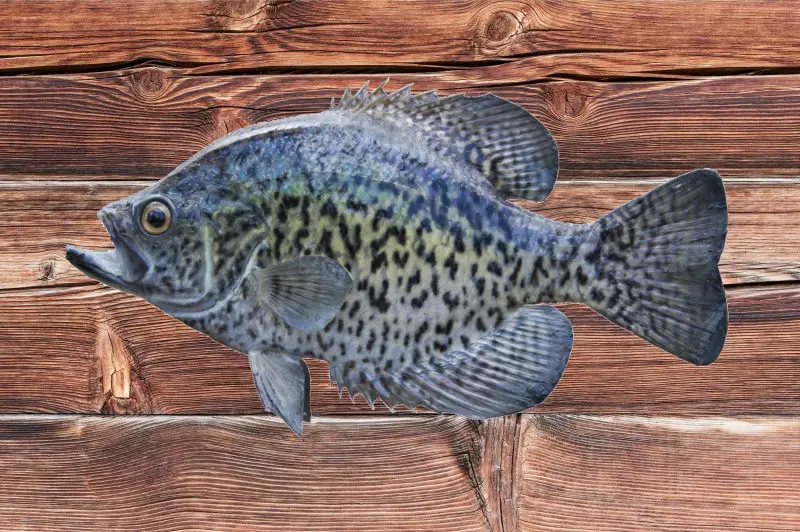Crappie are a highly sought-after fish. Not only are they considered game fish in much of North America, but they’re renowned for their taste and the healthy fat their meat contains. But what do the rules and regulations in each state say when it comes to using crappie as bait?
In most of the United States, using crappie as bait is illegal. However, there are still quite a few states you can use crappie as bait, so long as you know and obey their restrictions. These include Arkansas, Colorado, Hawaii, and many others.
In this article, I’ll summarize where you can use crappie as bait and what the specific restrictions are in those areas. I’ll talk about why these regulations exist, and whether dead fish count as live bait, too. Read on!
Where Can You Use Crappie As Bait?
While you can catch crappie all over North America, each region of the continent has its own way of legislating fishing. There may be limits on how much bait you can use, whether it can come from another body of water, and any number of things, some of which you might not expect. This is especially true if you’re new to fishing.
Using live bait is illegal in Washington, Utah, Oregon, and Wyoming. In most of the other states, using crappie as live bait is illegal because of overly broad restrictions, restrictions on using fully grown fish, or restrictions that make baiting with game fish illegal.
Most states have banned using crappies as live bait, so it’s better to list where it’s legal instead.
Using crappies as live bait is illegal in all states except:
- Alaska
- Arkansas
- California
- Colorado
- Georgia
- Hawaii
- Indiana
- Kansas
- Michigan
- Nebraska
- Pennsylvania
- Tennessee
- Vermont
- Virginia
- Wisconsin
States that allow crappies to be used as live bait have their own specific regulations as to how they can be caught and where they can be used, as well as daily limits as to how many crappies you can possess at once.
If you’re caught going over these limits, you’re likely to be fined. Don’t worry, though—in some states, you can possess up to 500 fish at once. For the average non-commercial fisherman, these limits are high above what you’re feasibly able to catch without industrial-grade equipment or dozens of extra hands.
State-Specific Regulations on Using Crappie As Bait
In some states, it’s legal to use crappie as live bait—with some restrictions. Here’s a breakdown of the rules in states where the practice is legal:
| Alaska | Only legal when used as bait for catching saltwater fish. Using live bait in freshwater is strictly prohibited. |
| Arkansas | Only legal when used in the same body of water as it’s caught. |
| California | Only legal when used in the Colorado River District. |
| Colorado | If west of the continental divide or above 7,000 feet (2,133.6 m) elevation, it’s only legal when used in the same body of water as it’s caught. |
| Hawaii | Only legal if the fisher possesses a baitfish license. |
| Indiana | Only legal when used in the same body of water as it’s caught. |
| Kansas | Only legal when caught with a hook and line. |
| Michigan | Only legal if used in an inland stream, lake, or Great Lake, or if used in a waterway directly connected to where it was caught. |
| Nebraska | Only legal if used in the same non-lake location as it was caught, and when caught with a hook and line. Using live-bait in lakes is strictly prohibited. |
| Virginia | Must be used whole, without any cuts or other tampering. |
| Wisconsin | Must be longer than 10 inches (25.4 cm). |
Remember, besides these restrictions, most states set a daily limit on how many fish you can catch or have with you at one time. Check your state’s regulations before you set out.
If you want to know more about choosing the right crappies for bait, I wrote an article on the ideal size for crappies.
Why Is Live Bait Sometimes Illegal?
Fishing with live bait is fun, makes sense, and is quite useful. So, why is it banned or heavily restricted in so many states?
Restricting the use of live bait prevents overpopulation, prevents the introduction of foreign fish that might damage the ecosystem, and restricts movement of certain diseases such as Viral Hemorrhagic Septicemia, or VHSV. It keeps our food safe to eat and preserves the ecosystem as it does so.
All over the world, ecosystems and their animals are currently suffering because of invasive species. When one or more species’ population is out of balance, it creates issues with food supply and over-predation. They may hunt their neighbors to extinction or deprive them of food, which causes the problem to spread in a never-ending cascade that often requires human intervention to stop.
The same is true of diseases. Just as with people, animals who’ve never come into contact with a foreign disease have no resistance to it. When a living bait escapes and is introduced to a new ecosystem, it can cause damage to other species. Not to mention, who wants to eat diseased animals and risk getting the disease themselves?
Keeping our waterways healthy and free of disease is everyone’s responsibility, and state regulations help enforce this mission. It’s not nice to receive a fine, but without regulations, protecting the ecosystem and all the activities that take place in it would be impossible.
If you’re interested in learning more about aquatic invasive species, check out the section devoted to the topic on the National Park Services website.
Do Dead Fish Count As Live Bait?
You may wonder if dead bait still counts as live bait. After all, you’re still taking a fish and using it in the same way you would if it was alive.
Dead fish typically count as dead bait, not live bait. However, there are only minor differences between them. Most of the rules that apply to live bait also apply to dead bait in most states, so don’t think you can get past the restrictions by killing your bait when you reach your fishing spot!
Not to mention, dead bait isn’t as effective as live bait. Fish can tell when something’s dead, and not all of them have a taste for dead flesh. It’s usually only effective when fishing for certain types of fish that prefer it, and you may find it hard to catch what you desire before your bait goes bad and you have to discard it.
If you’re interested in learning more about dead bait anyway, check out this in-depth article on the subject by Sport Fishing Magazine.
Conclusion
You can’t use crappie as bait in most states, and those that do have additional restrictions. Live bait is sometimes illegal because restrictions help preserve the ecosystem. Dead bait follows most of the same rules as live bait and is less effective in most cases.





